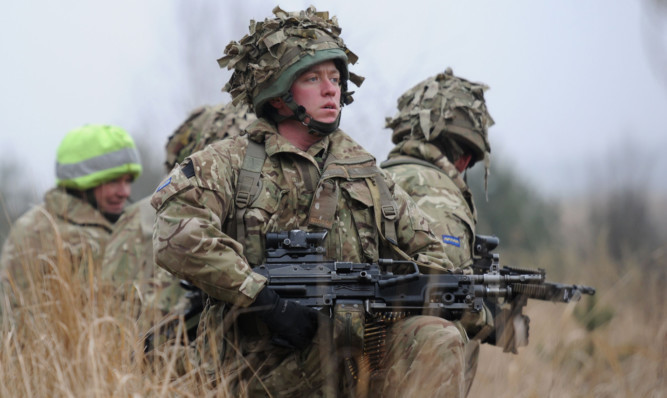Preparations to replace the RAF at Leuchars are so close troops can now virtually “see and smell” the base, according to their commanding officer.
In an interview with The Courier at the Fallingbostel army base in northern Germany, Lieutenant Colonel Ben Cattermole, commanding officer of the Royal Scots Dragoon Guards, said excitement is building among his officers and troops.
The Courier is spending this week with the Royal Scots Dragoon Guards as they conduct their final live firing exercise in Germany.
And the general mood among the soldiers is that after being in Germany since 1995, the regiment is delighted to be “going home”.
With the RAF due to officially hand over the Leuchars base to the Army on March 31, the bulk of more than 800 soldiers and their families are due to settle in Fife by July.
Some families have already relocated from Fallingbostel, with an advance party of troops due to move to Leuchars by March or April.
Lieutenant Colonel Cattermole has been visiting Leuchars just about every week recently.
He said: “This garrison will close this summer, so there will be no more Brits here.
“There will be some Brits left further south but of the two major combat brigades left in Germany, this one will all have gone.
“The barracks will be empty by September.
“In its heyday there were about 10,000 Brits, who are all going entirely, so there’s a huge impact on the local population here.
“That said, the Americans are said to be interested in moving into the area.”
Another important change was integration with the newly-formed reservist force the Scottish and North Irish Yeomanry.
He added: “While it’s a little bit Churchillian to say we are at the end of the beginning, I genuinely do think that we are at the end of the beginning of the whole Army 2020 proposition.
“These guys here today are doing their most taxing bit the live fire.
“Now, though, we can see and smell Leuchars.
“For us now, training remains our priority until mid-May and this is a critical part of it.
“Then we flick into packing boxes and get to Leuchars in good order, I hope. By mid-July we should all be there.”
The other parts of the army moving to Leuchars are the 2 Close Support Battalion Royal Electrical and Mechanical Engineers and the 110 Provost Company Royal Military Police.
With the regiment also continuing its conversion from a tank regiment to a light cavalry regiment using gun-mounted Jackals, Lieutenant Colonel Cattermole said the training under way in Germany was invaluable.
He said: “We have three squadrons out on the range at the minute each doing different things.
“Each are doing a week of live fire on vehicles and each doing a week on their feet.
“This is a new thing for us. Previously, it was all in tanks. Now we have mounted and non-mounted roles.”
The massive firing ranges surrounded by 65km of road between the Fallingbostel and Bergen-Hohne garrison are among the largest Nato ranges in Europe.
The Bergen training area was originally developed for the Wehrmacht during the pre-war 1930s.
Fallingbostel garrison was home to British and Soviet prisoner of war camps while just a couple of miles to the south west lies the remains of the infamous Belsen concentration camp.
The 70th anniversary of the Nazi death camp’s liberation by the British will be marked in April.
Britain has taken over the Nato firing ranges for three weeks.
